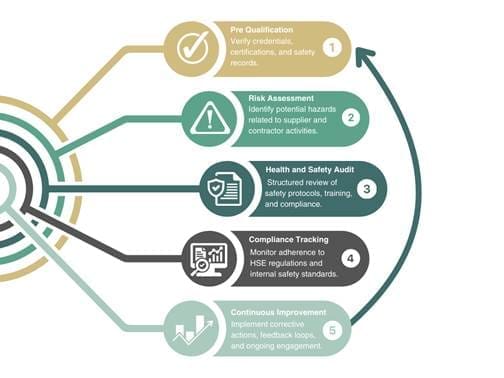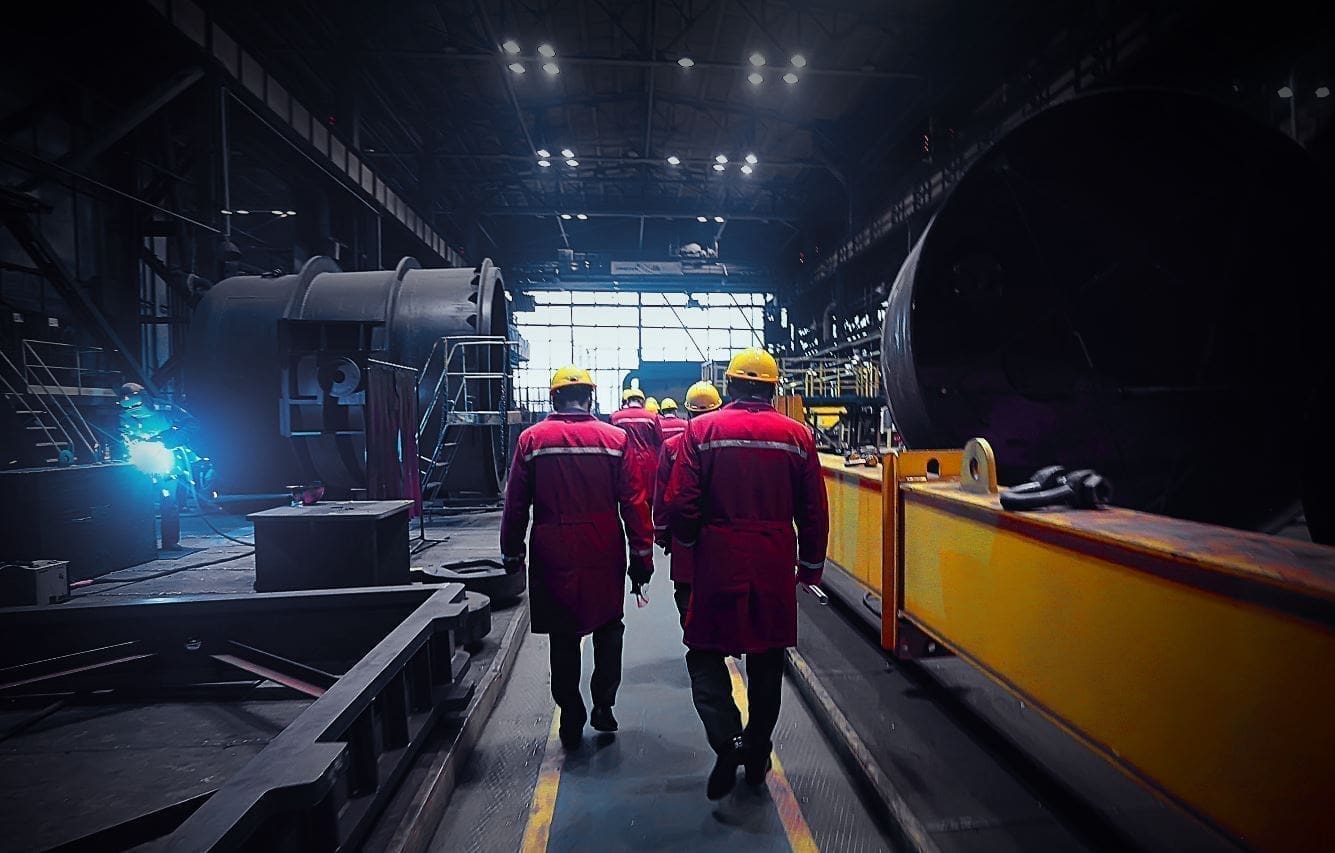Why Contractor Audits Are Critical for Managing Workplace Safety
Across industries such as construction, oil and gas, utilities, and manufacturing, businesses rely on contractors and suppliers to provide essential services. While outsourcing work can improve efficiency and expertise, it also introduces safety risks that companies must manage effectively.
Under HSE regulations, organizations that hire contractors are legally responsible for ensuring supplier compliance with health and safety audits and risk assessments. In the UK, for example, the Health and Safety at Work Act 1974 places a duty of care on employers to protect not only their direct employees but also any contractors working on-site. Failure to do so can lead to significant legal penalties, operational disruptions, and reputational damage.
A 2023 report from the UK’s Health and Safety Executive (HSE) found that 135 workers suffered fatal injuries in workplace incidents. Additionally, temporary and contract workers are disproportionately affected by workplace accidents due to gaps in safety audits, risk assessments, and oversight.
The Risks of Poor Audit and Compliance Processes
Despite improvements in managing workplace safety, contractor-related risks remain high. Achilles research shows that contractor work is twice as risky as employee work, underscoring the need for businesses to implement robust health and safety audits to assess and monitor compliance.
Without effective safety audits, businesses expose themselves to:
- Higher accident rates due to inadequate contractor training and risk mitigation.
- Legal and financial liabilities from non-compliance with HSE regulations.
- Reputational damage due to safety failures in the supply chain.
- Operational disruptions caused by workplace incidents.
A structured approach to contractor safety, including health and safety audits, supplier assessments, and real-time risk monitoring, is essential for reducing risk and ensuring compliance across all supply chain levels.
Ensuring Contractor Compliance – Key Questions to Ask
Ensuring contractor safety requires more than just meeting HSE regulations—it demands proactive risk management through health and safety audits and continuous compliance monitoring.
At Achilles, we’ve spent over 30 years helping companies in construction, oil and gas, manufacturing, and utilities improve supplier compliance through structured workplace safety audits. Our experience shows that businesses need a clear framework for assessing contractor risks before work begins.
A well-structured contractor health and safety audit should address critical areas of compliance, culture, and training. Before engaging with contractors, businesses should ask:
- Do they comply with all relevant HSE regulations in every country where they operate?
- Failure to meet local health and safety audits can result in significant legal and financial penalties. For example, in 2022/23, the UK HSE issued £26.9 million in fines for health and safety violations (HSE UK).
- Do they align with your company’s contractor safety and risk management approach?
- Are they committed to reducing accident rates through ongoing safety training and culture-building initiatives?
- Contractors working without regular safety training are far more likely to experience incidents leading to lost workdays and legal disputes.
- Do they have structured workplace safety programs in place, including fully insured and well-maintained equipment?
- The ISO 45001 standard requires organizations to ensure contractors have equipment fit for purpose and vehicles properly insured (ISO).
- Are all personnel appropriately trained and certified for the specific work they will be performing?
Why These Questions Matter
Beyond avoiding legal and financial penalties, failing to audit contractor safety can lead to:
- Higher accident rates affecting productivity and reputation.
- Regulatory fines and penalties due to non-compliance with HSE regulations.
- Project delays and cost overruns resulting from incidents and rework.
Implementing a robust health and safety platform ensures that businesses can verify supplier compliance, track contractor risk data, and proactively manage safety performance before issues arise.
Managing Risk Across the Supply Chain
Conducting health and safety audits and assessing contractor safety risks is just the first step. However, managing workplace safety extends beyond direct contractors, it also includes subcontractors and suppliers further down the supply chain. Many businesses struggle to maintain supplier compliance across multiple tiers. This leaves them exposed to hidden risks that can lead to accidents, legal penalties, and reputational damage.
The Challenge of Multi-Tier Contractor Management
Contractor risks don’t stop at tier-one suppliers, they extend throughout the entire supply chain. The International Labour Organization (ILO) reports that annually, approximately 2.78 million workers die from occupational accidents and work-related diseases, with an additional 374 million workers suffering from non-fatal occupational accidents. These statistics highlight the critical need for comprehensive safety oversight across all supply chain levels.
Furthermore, inadequate training significantly contributes to workplace incidents. A report by HR Magazine highlighted that only 54% of workers in the construction industry receive annual training, correlating with higher fatality rates in that sector.
Staying Ahead with Proactive Risk Management
Given the complexity of multi-tier contractor relationships, businesses need centralized safety oversight. Leading organizations now rely on health and safety platforms to:
- Automate contractor and supplier safety verification and compliance tracking.
- Ensure supplier compliance with HSE regulations.
- Conduct risk assessments to proactively mitigate potential hazards.
By implementing a structured safety management system, businesses can reduce workplace incidents, streamline audits, and maintain full compliance across their extended supply chains.
Contractor Management Made Easy
Managing contractor safety and supplier compliance can be overwhelming, especially for organizations operating across multiple sites and regions. Ensuring contractors meet HSE regulations and undergo health and safety audits is a complex process that requires real-time visibility and structured oversight.
The Challenges of Traditional Contractor Management
Without an integrated health and safety platform, businesses often face:
- Inconsistent safety standards across different sites.
- Delayed or missing supplier qualifications and safety records.
- Manual processes that make auditing inefficient.
- Increased risks of non-compliance, leading to fines and project delays.
According to the Health and Safety Executive (HSE), in the 2023/24 period, approximately 1.7 million workers in Great Britain reported suffering from work-related ill health, and there were 604,000 non-fatal workplace injuries.
How a Digital Safety Platform Improves Compliance
To streamline managing workplace safety, organizations are turning to centralized health and safety platforms. These systems help businesses:
- Automate contractor pre-qualification checks, ensuring all workers meet required safety standards before arriving on-site.
- Verify and track supplier compliance with HSE regulations and industry-specific safety standards.
- Conduct real-time audits to assess and manage contractor risk levels.
- Reduce administrative burden by replacing manual safety tracking with digital reporting tools.
The importance of effective safety management in multiemployer worksites is well-documented. For instance, a study published in the International Journal of Occupational Safety and Ergonomics discusses the challenges and strategies associated with safety management in such environments.
Turning Compliance into a Competitive Advantage
Many organizations treat contractor safety and HSE regulations as compliance checkboxes, but the most forward-thinking companies recognize health and safety audits as a competitive advantage. A well-managed, risk-aware supply chain doesn’t just prevent incidents, it also improves efficiency, enhances reputation, and attracts business partnerships.
The Achilles Approach: From Compliance to Supply Chain Safety Leadership

At Achilles, we go beyond basic contractor compliance. We help organizations embed safety as a competitive advantage in their supply chains. Our health and safety approach combines:
- Comprehensive contractor and supplier safety audits to ensure all personnel meet industry standards before starting work.
- Supplier risk benchmarking using real-world data to evaluate supplier safety performance.
- Risk assessments to identify potential safety failures before they escalate.
- Seamless procurement integration to embed health and safety audits into supplier onboarding and contract decisions.
- Contractor engagement programs to foster a culture of safety, not just compliance.
By centralizing contractor safety management, Achilles helps businesses:
- Reduce workplace incidents and legal risks with real-time compliance tracking.
- Improve operational efficiency by automating audits and risk assessments.
- Strengthen supplier relationships by aligning procurement with best-in-class safety standards.
Leading organizations don’t just meet safety requirements—they set the benchmark for supplier compliance. With Achilles, businesses streamline audits, reduce risks, and build safer, more resilient supply chains.




